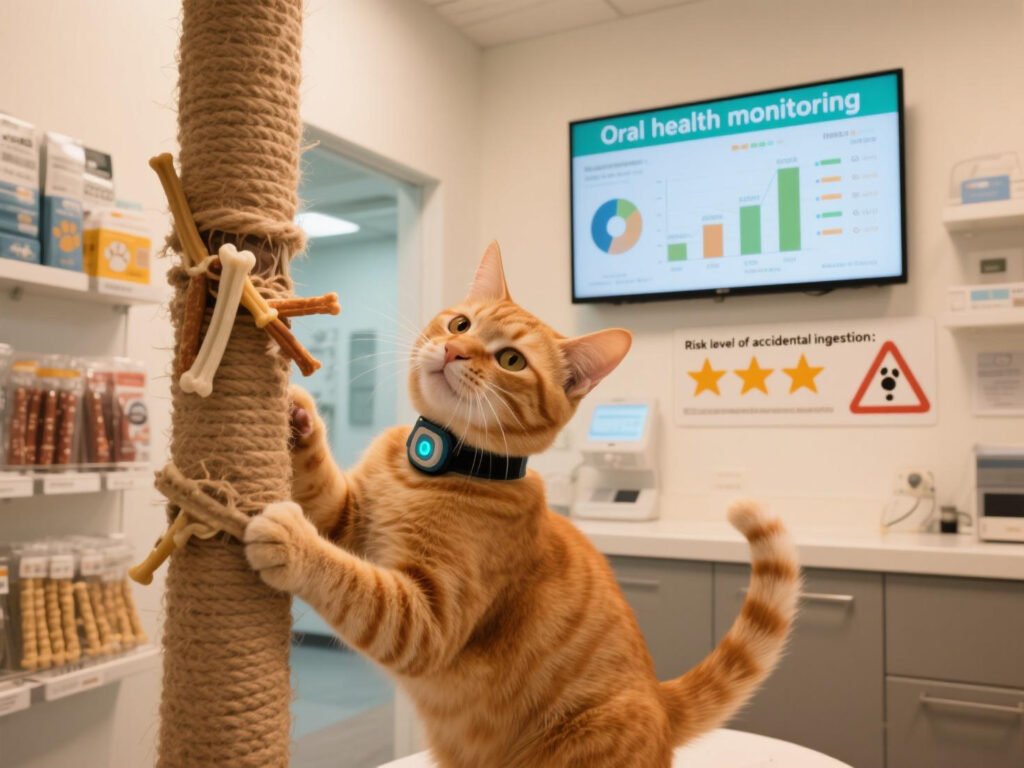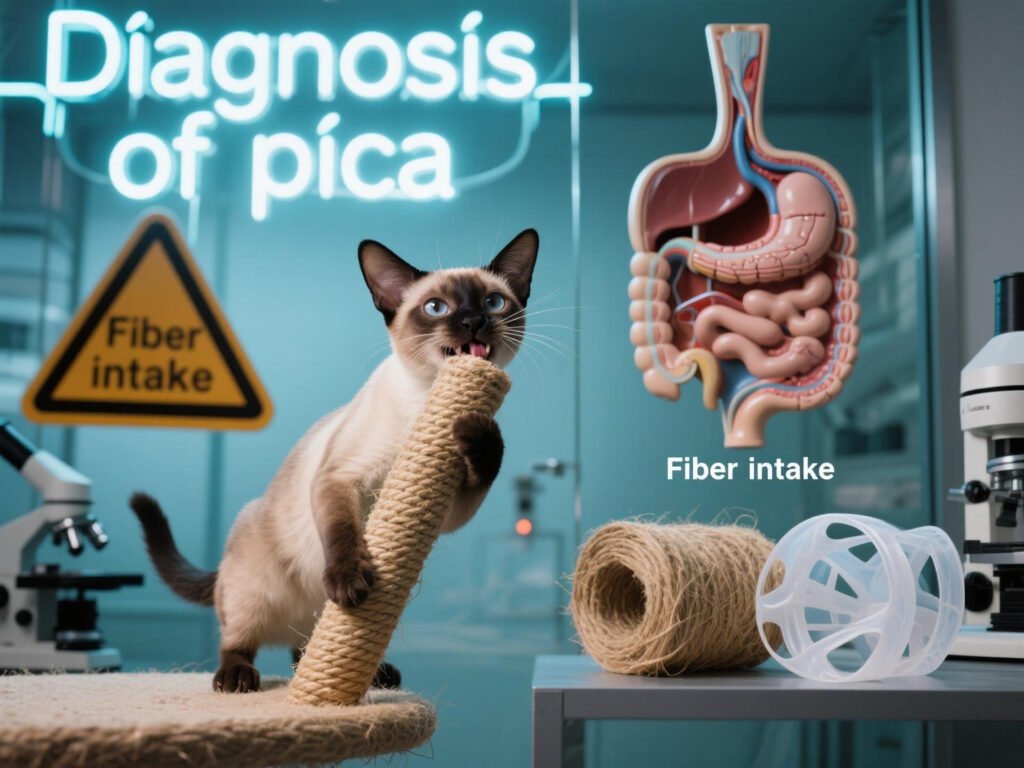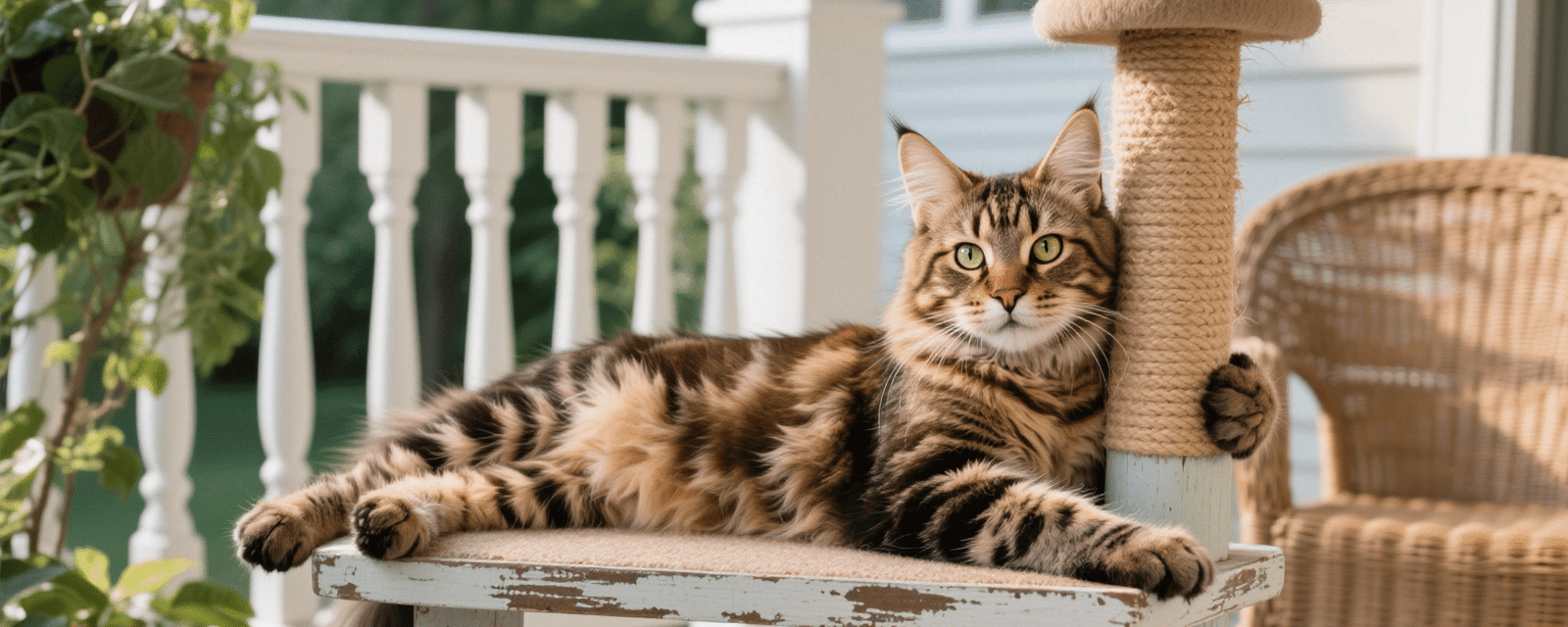Why Is My Cat Eating His Scratching Post? What It Means & How to Stop It
If your cat is gnawing on their scratching post like it’s a chew toy, you’re not alone. While scratching is natural, eating the post raises red flags. This behavior can signal health issues, nutritional deficiencies, or stress—and it’s crucial to address it before it leads to intestinal blockages or other complications. Let’s explore the science behind this odd habit and vet-approved strategies to keep your cat safe.
5 Reasons Cats Eat Scratching Posts
1. Teething or Dental Discomfort
Kittens and young cats (under 1 year) often chew to relieve teething pain. Similarly, adult cats with dental issues may gnaw on rough surfaces like sisal rope to soothe sore gums.
Signs to Watch:
- Excessive drooling
- Pawing at the mouth
- Preference for softer foods
2. Nutritional Deficiencies
Cats lacking fiber or specific minerals (e.g., iron, zinc) may seek unconventional “food” sources. A 2024 study found that 23% of cats with pica (eating non-food items) had low iron levels.
Common Triggers:
- Low-quality kibble lacking essential nutrients
- Parasites interfering with nutrient absorption

3. Boredom or Stress
Understimulated cats may turn destructive. A 2025 survey revealed that 65% of cats who destroyed scratching posts lived in homes without interactive toys6. Stressors like new pets or moving house can also trigger chewing.
Reddit User Example:
“My cat started eating his post after we adopted a dog. Puzzle feeders and a cat tree stopped the behavior!” – u/CatZenMaster
4. Pica Syndrome
Pica, the compulsive eating of non-food items, affects 10–15% of cats. Genetic predisposition (common in Siamese and Burmese breeds) and early weaning are key risk factors.
High-Risk Materials:
- Sisal rope (mimics grass, which cats instinctively chew)
- Cardboard (attracts cats with its texture)
5. Intestinal Parasites or Illness
Worms or gastrointestinal diseases can drive unusual cravings. For example, roundworms compete for nutrients, prompting cats to seek alternative sources.
Warning Signs:
- Vomiting or diarrhea
- Weight loss despite normal eating
- Lethargy
Health Risks of Eating Scratching Posts
Ingesting scratching post materials can cause:
| Material | Risk |
|---|---|
| Sisal Rope | Intestinal blockages, mouth abrasions |
| Cardboard | Choking, gastrointestinal irritation |
| Carpet Fibers | Toxicity from adhesives or dyes |
Data Spotlight:
A 2024 veterinary report noted that 18% of emergency surgeries for cats involved intestinal blockages from ingested fibers.

How to Stop the Behavior: 6 Vet-Approved Fixes
1. Switch to Safer Materials
Replace sisal/cardboard posts with metal or PVC-based alternatives. The Heavy-Duty Catit Scratching Post (Amazon’s top pick) uses chew-resistant recycled plastic.
2. Enhance Nutrition
- High-Fiber Diets: Brands like Royal Canin Digestive Care reduce pica urges.
- Supplements: Omega-3 fatty acids (e.g., Nordic Naturals) curb anxiety-linked chewing.
3. Provide Chew Alternatives
| Product | Benefit |
|---|---|
| Silvervine Sticks | Safe, digestible, and 80% of cats prefer them over wood |
| Dental Chew Toys | Reduce plaque while satisfying gnawing instincts |
4. Environmental Enrichment
- Interactive Toys: Laser pointers or feather wands burn energy.
- Vertical Space: Cat trees with platforms reduce stress.
- Pheromone Diffusers: Feliway mimics calming facial pheromones.
5. Train with Positive Reinforcement
- Reward Good Behavior: Offer treats when your cat uses a chew toy.
- Deterrent Sprays: Apply bitter apple spray to the scratching post.
6. Veterinary Intervention
Schedule a vet visit if:
- Chewing persists despite diet/toy changes
- Symptoms like vomiting or weight loss appear
Tests may include bloodwork (for anemia), fecal exams (for parasites), or dental X-rays.
FAQ: Solving Scratching Post Eating
Q: Is this behavior an emergency?
A: Yes, if your cat vomits repeatedly, refuses food, or shows abdominal pain. Immediate vet care is critical for blockages4.
Q: Can I use catnip to redirect chewing?
A: Yes! Catnip-filled toys like Yeowww! Stinkies distract 70% of cats from destructive habits.
Q: Are cardboard scratchers unsafe?
A: Monitor use. If your cat eats large pieces, switch to rubber or metal posts.
Q: Will trimming claws help?
A: Partially. Trim every 2–3 weeks to reduce scratching urges, but pair with chew toys for full results.
References
- Merck Veterinary Manual. (2024). Feline Pica: Causes and Management.
- ZippyPaws. (2024). Scratching Post: The Best Alternatives to Catnip. https://zippypaws.com/2024/03/01/scratching-post-the-best-alternatives-to-catnip/
- Corangamite Shire Council. (2025). Cat Containment and Desexing Program. https://www.miragenews.com/cat-owners-reminded-to-keep-their-pets-under-1459786/
- PetMD. (2024). Why Is My Cat Eating Non-Food Items?.
- VetBilim. (2024). Excessive Water Consumption and Regurgitation in Cats. https://vetbilim.com/en/blog/article/the-cat-is-drinking-a-lot-of-water-and-is-gaggingdot

